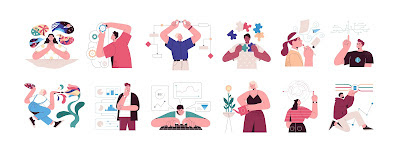How to set up meetings by accommodating the diversity in communication preferences
After graduating IMD with an MBA in 2015, I had some time before starting to work in Boston, in the USA. Therefore I decided to spend some time in New York before the graduation trip to Colombia with my MBA classmates. In New York City, I had the luxury of participating in a training session on MBTI.
The purpose of the Myers-Briggs Type Indicator® (MBTI®) personality inventory is to make the theory of psychological types described by C. G. Jung understandable and useful in people's lives. The essence of the theory is that much seemingly random variation in the behavior is actually quite orderly and consistent, being due to basic differences in the ways individuals prefer to use their perception and judgment.
IMD MBA focuses on developing leadership skills for MBA students. As we learn, leadership can be trained and taught. MBTI, I believe, is one of the most effective tools to understand ourselves and others. The purpose of this article is not to discuss MBTI, but I will talk about the first element of the MBTI.
The first element of personality type is Introvert or Extrovert, from the MBTI website.
Extraversion (E)
I like getting my energy from active involvement in events and having a lot of different activities. I'm excited when I'm around people and I like to energize other people. I like moving into action and making things happen. I generally feel at home in the world. I often understand a problem better when I can talk out loud about it and hear what others have to say.
Introversion (I)
I like getting my energy from dealing with the ideas, pictures, memories, and reactions that are inside my head, in my inner world. I often prefer doing things alone or with one or two people I feel comfortable with. I take time to reflect so that I have a clear idea of what I'll be doing when I decide to act. Ideas are almost solid things for me. Sometimes I like the idea of something better than the real thing.
This personality type (I or E) influences comfort in communication style. However, communication style does NOT influence the quality of ideas and opinions. Extroverted team members feel more comfortable discussing and building ideas while talking. The introverted team members feel less comfortable discussing and sharing their opinions because they need more effort to participate in the live discussions.
I have implemented two practical and simple methods to improve the quality of meetings, based on the above perspective.
The first is to share the details of the meeting, such as the goal, agenda, and key issues. The most critical element of these is the key issues. Issues need to be structured and detailed enough so that the participants can focus and think of concrete answers. Introverted team members can prepare ideas in advance, and extroverted team members can develop their ideas better.
The second method is to dedicate time to think and write down ideas and opinions. When a meeting becomes more active and intense, it becomes difficult for introverted team members to participate. This is the right time to pause and let the introverted team members participate more effectively.



Comments
Post a Comment